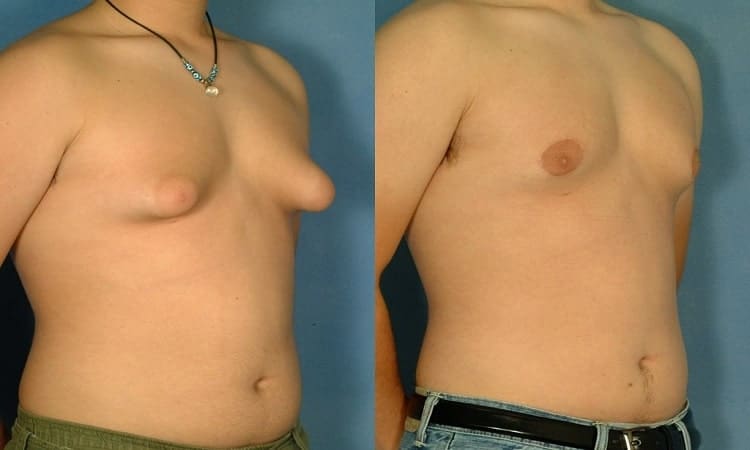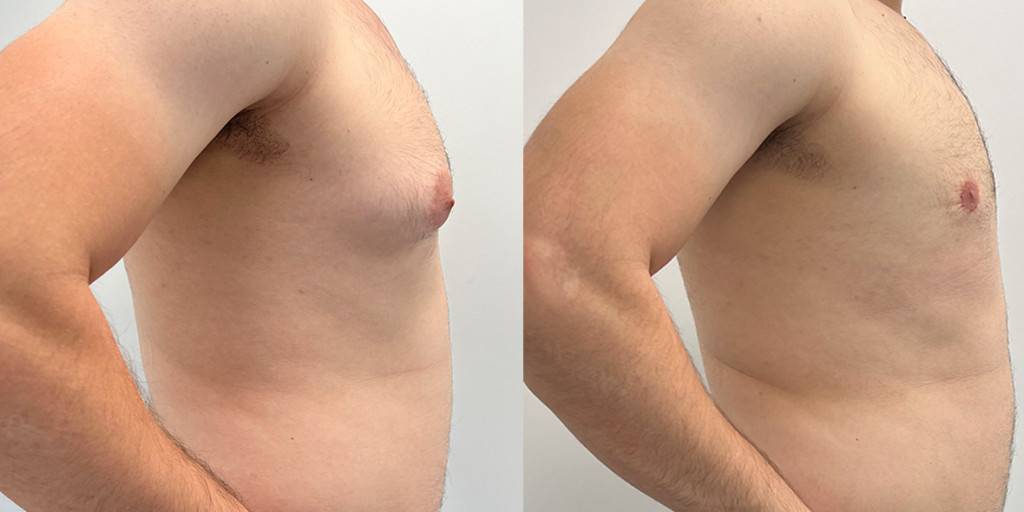For men in Pakistan, gynecomastia surgery presents an opportunity to reclaim confidence and enhance their well-being. This guide delves into the nuances of gynecomastia surgery cost in pakistan, covering essential aspects such as cost considerations, various surgical techniques, and vital recovery advice. By shedding light on these concerns, individuals can make informed decisions about pursuing gynecomastia surgery, understanding its potential impact on their lives.
From addressing concerns about affordability to providing insights into the surgical process and post-operative care, this guide serves as a valuable resource for those considering this transformative procedure. With the right knowledge and guidance, men dealing with gynecomastia can embark on their journey towards self-assurance and improved self-image, knowing what to expect every step of the way.
Table of Contents
Start With Figuring Out Your Gynecomastia Needs:
Before considering surgery, a thorough understanding of your specific condition is essential. Here are some key considerations:
- Severity of Gynecomastia: The severity of gynecomastia plays a pivotal role in determining the appropriate surgical approach. A thorough evaluation by a healthcare provider involves assessing the extent of breast tissue enlargement through physical examination and possibly imaging tests like mammograms or ultrasound scans. Based on the severity, the surgeon can recommend the most suitable surgical technique, such as glandular tissue excision, liposuction, or a combination of both, to achieve optimal results.
- Underlying Cause: Identifying the underlying cause of gynecomastia is essential for devising an effective treatment strategy. Hormonal imbalances, medication side effects, genetic factors, or underlying medical conditions can contribute to gynecomastia. Therefore, a comprehensive medical history review and diagnostic tests may be necessary to pinpoint the root cause. Addressing the underlying issue not only helps in planning the appropriate treatment but also minimizes the risk of recurrence post-surgery. By addressing the cause, healthcare providers can tailor treatment plans to target the specific factors contributing to gynecomastia, ensuring better outcomes for patients.
Exploring treatment options for gynecomastia involves considering both non-surgical and surgical interventions. Lifestyle modifications such as exercise and dietary changes may suffice for mild cases, while medications can help address hormonal imbalances contributing to gynecomastia. However, for persistent or severe cases where conservative approaches prove ineffective, surgery becomes the preferred option.
Surgical intervention, such as glandular tissue excision or liposuction, offers a more direct and permanent solution by removing excess breast tissue and reshaping the chest contour. By opting for surgery, individuals with gynecomastia can achieve more immediate and noticeable results, restoring confidence and improving quality of life. Consulting with a qualified healthcare professional is crucial to determine the most suitable treatment approach based on the severity of gynecomastia and individual health considerations.
Here’s an overview of the two main surgical procedures for gynecomastia:
- Liposuction: Liposuction stands as a minimally invasive and effective approach for gynecomastia cases predominantly involving excess fatty tissue. During the procedure, a thin tube called a cannula is inserted through small incisions to suction out the surplus fat, sculpting a more contoured chest appearance. Liposuction offers advantages such as shorter recovery times and smaller incisions compared to more extensive surgical methods, making it an attractive option for suitable candidates.
- Surgical Excision: On the other hand, surgical excision becomes necessary for more severe instances of gynecomastia, particularly when there’s a combination of excess fatty tissue and glandular tissue enlargement. This procedure involves removing both types of tissue through discreetly placed incisions. Surgical excision allows for precise contouring of the chest and can address glandular tissue, which liposuction alone may not adequately address. In complex cases, additional techniques like nipple repositioning may be incorporated to achieve optimal aesthetic results and ensure symmetry in the chest area.

Choosing the Right Surgeon for Gynecomastia Surgery In Pakistan:
When considering gynecomastia surgery in Pakistan, selecting a qualified and experienced surgeon is paramount for a successful outcome. Firstly, ensure the surgeon is board-certified by the College of Physicians and Surgeons of Pakistan (CPSP) in Plastic Surgery or General Surgery. It’s essential to seek a surgeon with a proven track record of successful gynecomastia treatment without surgery, ideally showcasing their work through a portfolio on their website.
Communication style is crucial; finding a surgeon with whom you feel comfortable discussing your concerns openly is key. During consultations, ensure the surgeon understands your expectations and explains the procedure thoroughly. Additionally, opt for a surgeon affiliated with a reputable, accredited hospital in Pakistan. This ensures access to advanced facilities and equipment, contributing to optimal care throughout the surgical process.
Cost Considerations for Gynecomastia Surgery in Pakistan:
The cost of gynecomastia surgery in Pakistan can vary based on several factors. Surgeon’s experience and expertise play a significant role, with highly experienced surgeons typically charging higher fees. The complexity of the procedure also affects the cost; more intricate surgeries involving surgical excision may be more expensive than liposuction alone. Additionally, hospital fees and anesthesia charges contribute to the overall cost.
While specific figures cannot be provided here due to ethical and legal considerations, a general range for gynecomastia surgery in Pakistan may be from PKR 150,000 to PKR 300,000 or more. It’s crucial to remember that this is just an estimate, and the actual cost can vary depending on individual circumstances and the factors mentioned above.
Beyond surgeon selection and cost, here are some crucial aspects to consider:
Before undergoing gynecomastia surgery in Pakistan, a thorough pre-operative evaluation is essential. Your surgeon will conduct a comprehensive physical examination, review your medical history, and may recommend imaging tests to assess your suitability for the procedure. Certain medical conditions may require management before surgery, so it’s crucial to discuss any existing health issues openly. Your surgeon will also discuss anesthesia options tailored to your needs and the complexity of the surgery.
Following the procedure, there will be a recovery period characterized by swelling, bruising, and discomfort. Understanding the recovery timeline and potential limitations, such as the need for a compression garment, is essential for optimal outcomes. While gynecomastia surgery typically provides long-lasting results, factors like weight fluctuations can influence them. Discussing long-term expectations with your surgeon is crucial. Additionally, some hospitals or clinics may offer financing options for the surgery, but it’s important to carefully research these options and understand the terms and interest rates involved before proceeding.

Importance of Realistic Expectations For Gynecomastia Surgery:
Gynecomastia surgery, like any surgery, comes with inherent risks and potential complications. It’s essential to approach the procedure with realistic expectations. Open communication with your surgeon about potential outcomes and any risks involved is crucial for informed decision-making. This includes understanding that:
- Results are individual: The final outcome will depend on factors like your body type, skin elasticity, and the severity of gynecomastia.
- Scarring is possible: While most scars fade over time, some degree of scarring is a possibility with any surgery. Discuss scar management options with your surgeon.
- Symmetry may not be perfect: Achieving perfect symmetry can be challenging. Discuss realistic expectations for breast appearance with your surgeon.
Following gynecomastia surgery, adhering to proper recovery protocols is vital for achieving optimal results. Your surgeon will prescribe medication to manage post-operative pain effectively. It’s crucial to plan for adequate rest during the initial recovery phase and follow any activity restrictions provided by your surgeon to promote healing. Wearing a compression garment as directed can help minimize swelling and provide support to the healing tissues.
Additionally, proper wound care is essential to prevent infection, so diligently follow your surgeon’s instructions for cleaning and dressing the incision site. Lastly, attending all scheduled follow-up appointments with your surgeon is important for monitoring healing progress and addressing any concerns promptly. By following these recovery tips diligently, you can support a smooth and successful recovery process after gynecomastia surgery.
Conclusion:
Gynecomastia surgery can be a life-changing procedure for men seeking a permanent solution to breast enlargement. Also, by carefully considering your individual needs, choosing a qualified surgeon, and understanding the costs and recovery process, you can embark on a successful journey towards improved confidence and a more fulfilling life. Remember, prioritizing your health and achieving a natural-looking, improved physical appearance can be a positive step forward.

